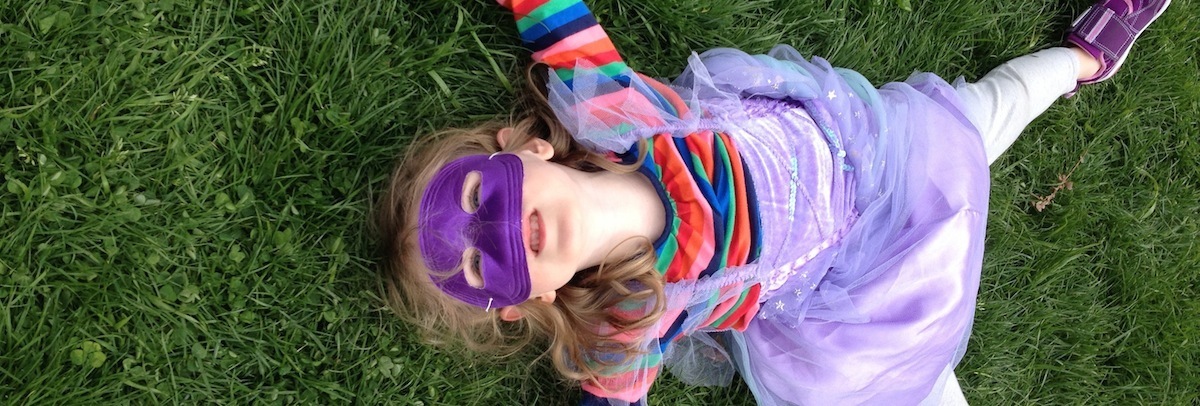Follow the Arrows
-
Age: 3 to 8
-
Time: 1 hour+
-
Materials: objects to use as treasure; notecards; sticks
- Skills: Imagination, Navigation, Active Lifestyle, Gross Motor, Focus & Self Control
Navigation Activity for Kids
Looking back, we did a lot of hunting growing up—not the kind that involved animals, mind you, but the sleuthing kind. In our families, we cracked rhyming clues to find hidden birthday presents and followed green arrows in hot pursuit of St. Patty’s Day treats. Cousins even had a tradition of running “hash” races out in the woods (a super fun, laid back trail race full of markers and switchbacks). Rather often, “treasure” was hidden, trails were laid, and we kids were loving the hunt. And, it turns out, such shenanigans are no less engaging with our kids and their friends.
Such hunts are really easy to pull off outdoors, and they lead to all kinds of genuine, child-directed play. Once kids experience it, they nearly all become hunters and hunt-makers too. Plus, from an educational perspective, the hunt can help teach kids to focus, imagine, navigate and even prepare to read. All you need, really, is ample supply of sticks (thanks, mother nature) and a few minutes to lay stick arrows along a trail before your kids see. If you want to engage their imaginations further, you’ll need a few notecards and ideas about ways to get kids pretending (we’ve got you covered there). Then, let the hunting and playing begin.
The Guide
- Gather sticks: Start with around 20 arrows for kids ages 3 to 4. For older kids, do even more. Use a stick about 1 foot in length and two shorter sticks to make each arrow.
- Lay the arrows down: Find an area in your backyard, park or the woods and lay an arrow every 20-30 yards to make your trail. If you have 3-4 year olds, start on grass so sticks are more visible than on the forest floor. For older children or seasoned hunters, though, the forest floor can offer the perfect challenge.
- Mark the end and lay treasure: Use a symbol like a giant X or a star made of sticks to mark the end of the trail. Then, hide some “treasure” nearby, ideally something(s) that inspires kids to tinker for a while. Some of our favorite treasures included: a bundle of sticks to use in our “What to build…” activity; a sack full of different sized-balls to play with; a bag of rope, bungee cords and a tarp which can quickly become the coolest makeshift fort; and a bunch of wind flags for hunting the wind.
- Set the scene: Bring kids near the first arrow and tell them that you’ve found something extraordinary and need their help. Look at the arrow together, making sure that kids understand what it is (a symbol called an arrow) and what it tells us (to move in a certain direction). Practice using arms and pointed fingers to show where the arrow on the ground tells you to go. Then, add some mystery by letting them know that you are pretty sure this arrow marks the start of a secret hunt. Ask them if they are ready to follow the arrows and solve the hunt, then have at it!
- Let them hunt: Let the kids go. The speedier kids always lead, but then are often impatient. Given how tricky it is to find arrows, the hunt usually rewards the observant over the fast, at least at some point in the hunt. So, sit back and let this lesson play out for kids. Do help them if they go off course, though, by encouraging them to check back at the last arrow they found.
- Celebrate, then let them play: Cheer when you’ve found the final symbol and the treasure. Then, make sure you allow as much time and space as you can for kids to play with whatever treasure they’ve uncovered. The underlying goal is always to jumpstart kids' genuine nature play, so we like to think of the hunt as a powerful means to this end.
- (Optional) Add more: To activate kids’ bodies and imaginations, leave a pretending card with a few of the arrows. For example, a pretending card may read “Cross a rushing river.” Read the card to kids tell them that “Ah! The hunt makers want us to pretend to cross a rushing river as we make our way to the next arrow!” Then, start pretending to swim, take a boat, build a quick bridge, etc. Some other ideas for pretend cards: climb a mighty mountain; cross a mucky mud pit; walk in whirling winds; stand in a swirling snowstorm; get chased by a cheetah (note: we love using repetitive sounds to support literacy).
- (Optional) Their turn to lay a hunt trail: If kids really loved the hunt part, especially kids 5 and older, encourage them to play around with setting their own trail for you or their friends to follow.
Why is this activity great for kids?
Hunts are both pure thrills and a highly engaging way to build skills. By identifying and interpreting the arrow symbol, all kids strengthen navigation skills, while kids ages 3 to 5 develop also bolster the skills they’ll use to read language. Hunting for wooden arrows on a natural floor also requires even our speed demons to slow down and pay careful attention, building focus and self-control. Running, stopping, turning back and stooping to see arrows and pretend cards builds gross motor skills and the habits of an active lifestyle. Plus, if you include the pretend cards, your kids’ imagination also gets a workout!




